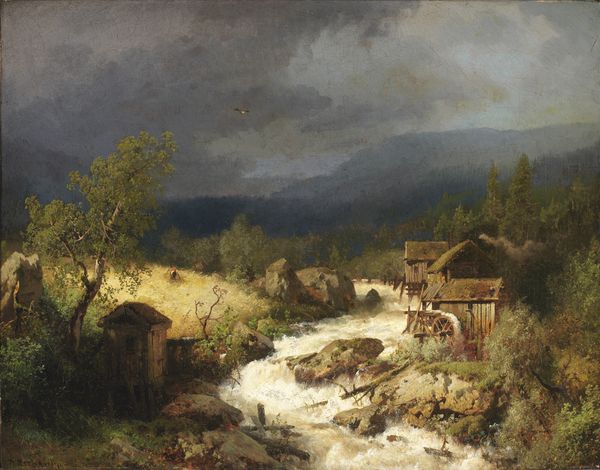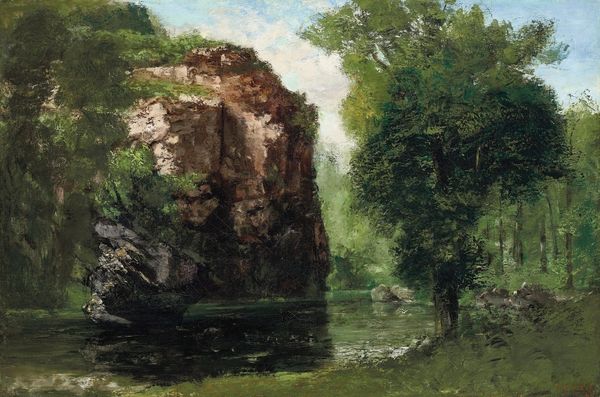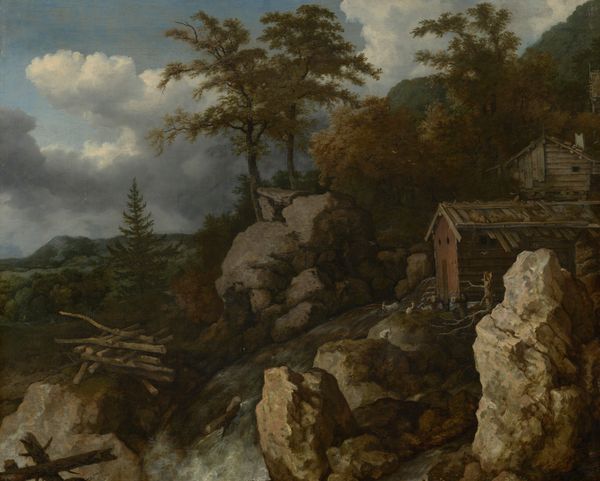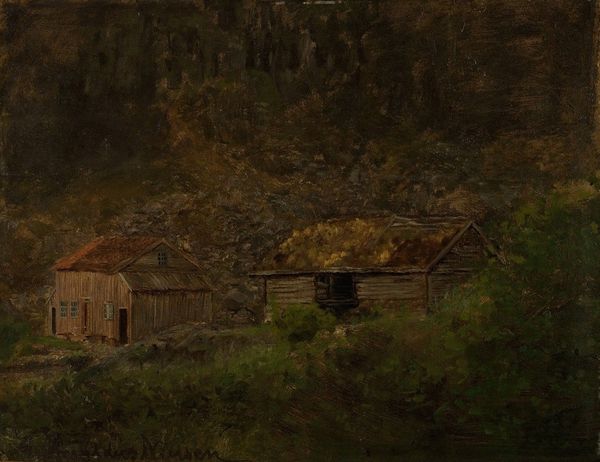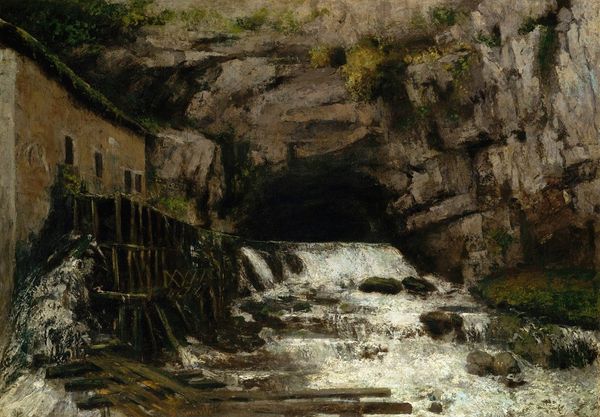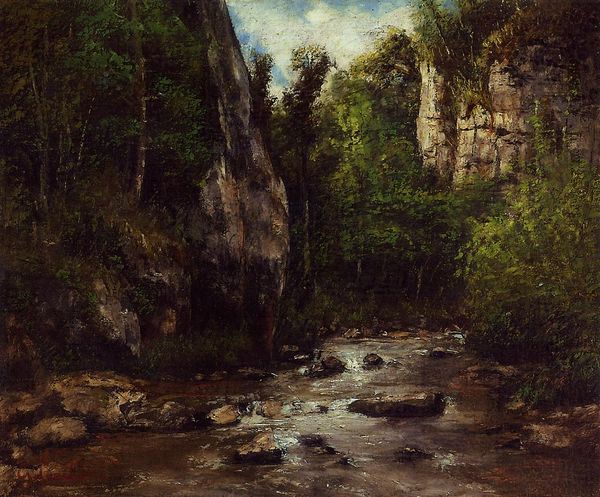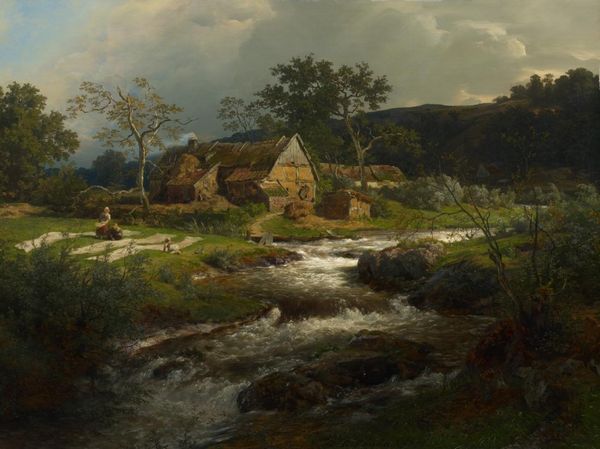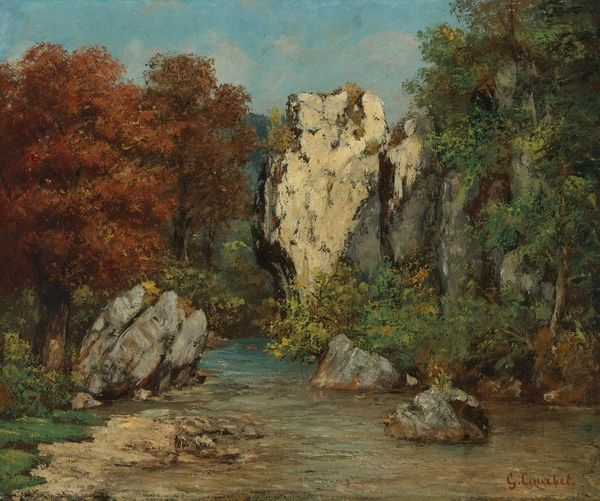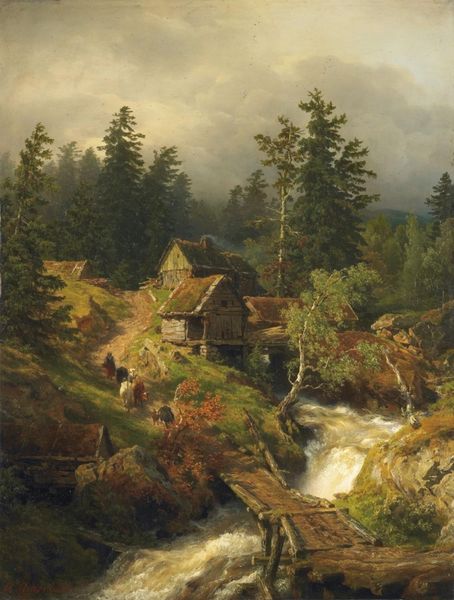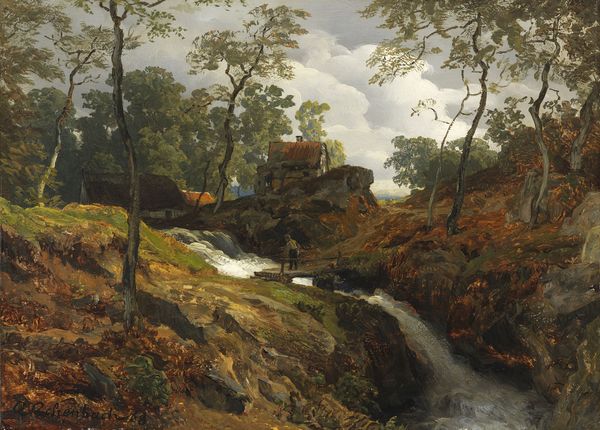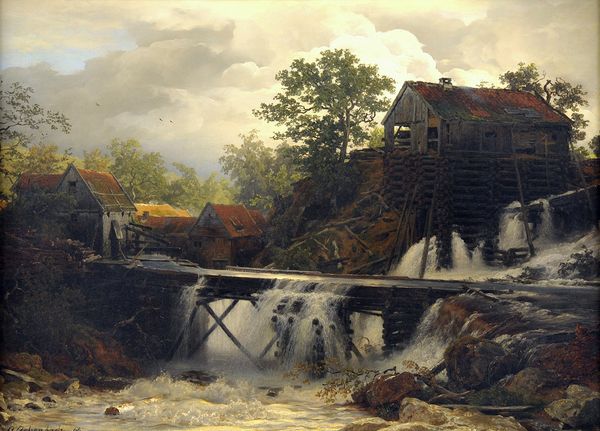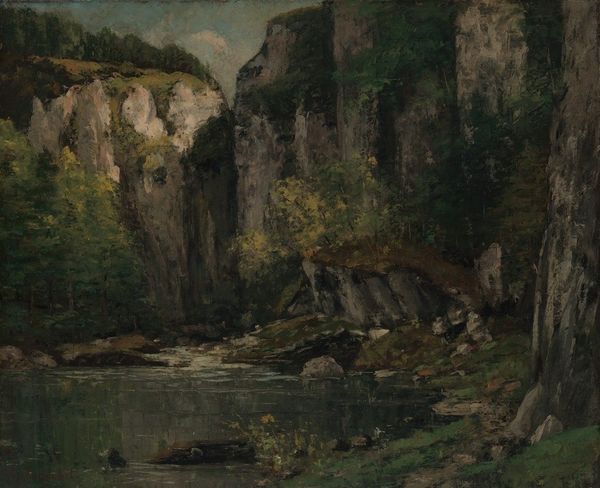
Copyright: Public Domain: Artvee
Gustave Courbet’s Le Moulin presents us with a serene landscape dominated by the steadfast presence of a watermill, a quintessential symbol of rural industry. The wheel, endlessly turning, echoes motifs of cyclical renewal found across cultures, from ancient fertility rites to the wheel of fortune in medieval iconography. Consider the Jungian archetypes at play here: the mill, as an enclosed structure adjacent to the flowing water, can be seen as a locus of transformation, a place where raw materials meet the human intellect. The image resonates with the ancient concept of “axis mundi” – a world center that connects the terrestrial and the divine realms. The rhythmic motion of the water and wheel invokes the eternal recurrence, much like the ouroboros, the snake devouring its own tail. The mill, positioned at the base of a craggy cliff, evokes the interplay between the transient, man-made world and the eternal, natural world, suggesting both resilience and the inexorable power of time. It reminds us of the persistent human attempt to harness nature, a recurring theme throughout art history, and it continues to provoke contemplation of our place within the grander scheme of existence.
Comments
No comments
Be the first to comment and join the conversation on the ultimate creative platform.
